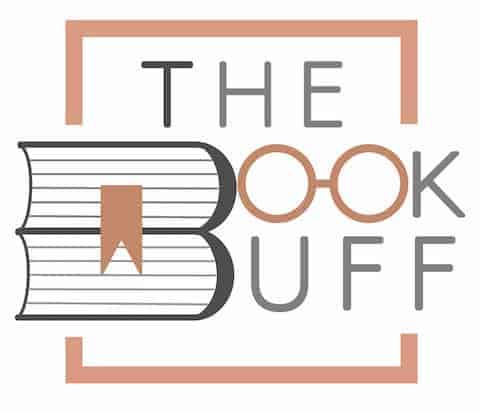How Fast Should You Read a Book? [A Complete Guide!]
Disclosure: This post may contain affiliate links. – meaning I may get a commission if you decide to purchase through my links, at no additional cost to you.
If you love to get new books but don’t end up reading them, chances are your interest in new ideas is hindered by a lack of momentum. With the right momentum, you can take your curiosity to its conclusion and become better educated with a diverse set of books under your reading history. But if you go too fast, you might not get all the details.
Generally speaking, you should read at about 200 to 300 words per minute (wpm) or 30 to 45 pages an hour. This will allow you to maintain a good momentum of reading and comprehension. If you want to memorize or learn, then read at about 100 to 200 wpm. Speed reading can be done at above 400 wpm.
In this article, we will cover the pros and cons of reading fast and slow. You will also learn more about hybrid reading strategies. Plus, we’ll also talk about the various speeds and how to improve your reading speed!
So, let’s get started, shall we?
Pro Tip! If you want to improve your reading speed, I’d highly recommend you to check out this speed reading course. It is perfectly suited for beginners! It is very affordable and comes with a 60-day full money-back guarantee! So, you have nothing to lose!
How Fast Can You Read?
Let us first understand how fast can you read a book by knowing the typical reading speeds!
In general, an average reading speed of a reader is about 200 to 300 words per minute (wpm). Good readers can read at about 300 to 400 wpm. More accomplished readers usually read at about 400 to 700 wpm. Experienced speed readers can achieve a reading speed of about 700 to 1000 wpm!
Here’s a table highlighting the reading speed based on your reading skill or experience level.
Range of Reading Speeds Based on Reading Experience
| S. No | Experience Level | Range of Reading Speed |
|---|---|---|
| 1 | Beginner | 100 to 150 wpm |
| 2 | Average Reader | 200 to 300 wpm |
| 3 | Good Reader | 300 to 400 wpm |
| 4 | Advanced Reader | 400 to 700 wpm |
| 5 | Highly Skilled Speed Reader | 700 to 1000 wpm |
That said, not everyone is able to achieve even the average reading speeds! Most beginners read at a reading speed of about 100 to 200 wpm. If you don’t read that often or if you are just starting out with reading, you could fall under this category.
Don’t worry, as you read more, you should quickly reach at least the average reading speed!
Should You Read a Book Fast or Slow?

Reading a book fast or slow depends on the context. For example, if you’re reading a book on a speedreading dare, then you should read fast. But if you’re reading to bore yourself to sleep, then you should read slowly.
However, most people don’t fall into either of these categories and are actually reading to get great ideas or stories within a reasonable time frame.
Most people who read on a regular basis have a reading strategy. Whether you have a fast reading strategy or a slow one, it must have a rationale that serves you.
You cannot speed up your reading to impress someone or slow it down just to follow someone else’s recommended word per minute count. You read for yourself, so it is essential that you read in a way that works for you.
By looking at the pros and cons below, you might be able to decide which strategy suits you.
When Should You Read a Book at a Slow Pace?
In general, reading at a slow pace is most advisable when you want to learn, internalize or memorize what you read. This involves reading at a speed of 100 wpm or lower. At this pace, you have the liberty to re-read certain sections, or highlight and take notes for better recall.
Although reading at a slow pace has its advantages in helping you truly internalize what you read. The primary drawback is that it can take some time before you complete your book!
Below are some of the advantages and disadvantages of reading a book at a slow pace –
Pros of Reading a Book Slowly
1. Have the Capacity to Form New Ideas
This is a crucial advantage of reading slowly. You’re never just consuming information; you’re always absorbing and processing it.
Your mind, given the space, constantly cross-checks ideas with your experiences. This leads to new insights, but only if the brain isn’t too busy catching up with your reading speed.
Consequently, you get the gift of connective reflection only when you read a book slowly and even incorporate pauses.
2. Capture Nuances of the Content
Whether it is a non-fiction book filled with useful information or a fantasy novel with ample worldbuilding and lore, you can truly immerse yourself in the reading experience when you slow down.
Books are rarely written to be window-shopped for ideas. They’re intended to be read at an average pace at a minimum.
Cons of Reading a Book Slowly
While reading at a slow pace has its advantages, it also has some drawbacks –
1. Losing Momentum
One of the greatest drawbacks of reading slower than necessary is that you lose momentum, and consequently interest, in the book halfway through.
Very few books feature content so thrilling that you will overcome inertia to pick the book again when you’ve made only past the first chapter in a month.
2. Fewer Ideas in a Year
When you reduce your reading speed, the number of books you read in any given year drops as well. This means you’ll have fewer fresh ideas coming your way.
While this is better than no new insights, it still is a drawback, and you’ll need to balance it out by incorporating some summary skimming or speed reading into your book consumption strategy.
When Should You Read a Book Fast?
Generally speaking, you should read a book fast when you are short on time or when you have too much reading material to cover. You can also choose to read a book fast if you just want to get a gist of what the book is about, get ideas, or just some inspiration.
Moreover, reading fast is a skill. It is not suitable for everyone. You need time to develop this skill.
One of the key aspects of reading fast is comprehension. You don’t just want to read fast. You should also be able to comprehend what you read! As you read faster, you are less likely to comprehend more unless you have built the skill over time with practice.
Nevertheless, here are a few advantages and drawbacks of reading a book fast –
Pros of Reading a Book Fast
1. Takes Less Time
If you don’t find time to do anything new, then investing some time to improve your reading speed is worthwhile because it will ensure you don’t drop reading altogether because of other commitments.
2. It Covers a Broad Range of Ideas
In case you host a podcast where you talk to authors or have a position where you must educate with a breadth of ideas, you’ll need to have access to a larger quantity of ideas.
A speed reader can finish a book in a day and have ideas from 7 different authors in a week.
3. It Is Impressive
Yes, you shouldn’t read to impress others, but that doesn’t take away from the fact that reading a book within a day is quite impressive to most people who find reading to be daunting.
Cons of Reading a Book Fast
1. Loses Depth
When you skim an idea, you get the gist of it but fail to glean it at the depth intended by the author.
This isn’t a factor in most books where the ideas aren’t that deep, and the content surrounding the ideas is made up of filler. But when you read Nietzche or Ryan Holiday, you don’t want to lose the deeper layer underneath the surface level of the idea by speeding through it.
2. Loses Significance
The amount of time and effort you put into acquiring anything correlates directly with how much you value it.
There’s a psychological concept called the “Sunk cost fallacy,” where an individual continues in a failing venture, project, or relationship mainly because of the effort he has put into it.
We value what makes our time and effort, and when you get ideas effortlessly through speedreading, you might not value them as much.
The Hybrid Strategy for Reading

You should read a book fast to get ideas and inspiration but should slow down if you plan on internalizing the ideas in a book. This is not mutually exclusive; you can speed read a book and then go back to reading slowly to appreciate and absorb each idea a little more.
This hybrid strategy is used by book reviewers and busy CEOs.
The hybrid reading strategy is a mix of speed reading and slow, deliberate reading that gets you the best of both worlds. You get short bursts of insights, and whatever catches enough of your interest gets a deeper dive.
Take the example of Bill Gates. When he reads only 50 books, he definitely reads each book more slowly.
However, it is hard to imagine him picking up a book cold and committing a week’s worth of his time to it (worth over a hundred million dollars) without knowing ahead of time the kind of ideas the book features.
To have such insight ahead of time, you should either speedread the book or get a Blinkist summary of it before reading it slowly.
However, this is not recommended for new readers who should use their curiosity (idea blindness) to go into a book and discover each idea by putting in the work required to read.
Only when one doesn’t find reading to be boring can one incorporate a hybrid strategy, or they’d be tempted to simply skim and pick the next book.
How Long Should it Take to Read a Book?
There are several factor that can influence how long it takes for you to read a book.
Generally speaking, you should be able to read a book of 400 pages in about 10 to 14 hours. The amount of time it takes for you to read a book can vary depending upon your reading speed, the number of pages in a book, and the difficulty level of the book.
A typical book usually contains about 400 pages. An average reader should be able to read 30 to 40 pages an hour! Depending on number of hours you read a day, it can take you about 5 to 10 days to finish reading a book.
Is it Possible to Read a Book in a Day?
While it can take quite a few hours to finish reading a book, you may have heard people boasting about how they manage to read a book a day! And, you may be wondering, is that even possible? You can read a book in a day?
It is possible to read a book in a day. To do that, you need to develop your reading speed and become an accomplished reader. Inculcate a reading habit and practice daily such that you can read at about 400 to 700 wpm (or more). Pick a book that is a light read and contains fewer than 400 pages.
That said, you should try to take as long as it requires to read a book especially when you are starting out! Don’t get discouraged if you are unable to read a book fast.
But, make sure that you read consistently and build a reading habit. Divide your reading time across the week, and read without distractions. Gradually, over time you should be able to read faster and perhaps even finish reading a book in a day!
How Fast Can Experienced Readers Read?

On average, experienced readers can read at about 400 wpm or more! Experienced readers not just manage to read faster, but they are also able to maintain or better the comprehension levels than average readers. With experience, a reader’s brain gets trained to process the information faster.
To become an experienced reader, you need to devote several hundreds and hundreds of hours to reading. As the famous Malcolm Gladwell said in his book “Outliers: The Story of Success” that you need to spend 10,000 hours of intensive practice to achieve mastery of a certain skill!
Although new research suggests that it is not just the number of hours spent, but also the quality of training or teaching that you get, and how you capture the learnings and course correct during the period of these 10,000 hours that matters more.
So, to become an effective or an experienced reader, the key is to practice reading more and more every single day!
How to Check Your Reading Speed?
Before you begin your quest to improve your reading speed and choose to read fast (or slow), it is important that you at least know where you currently stand!
Fortunately, there are quite a few free reading tests online that can help you with assessing your reading speed.
You can check your reading speed using an online reading speed test like the one offered by Reading Soft. Such tests help you track the improvement of your reading speed.
You can improve reading speed by reading more often or adopting a tactical reading strategy taught by speed reading coaches.

About the Author
Akansha is a former business journalist and a seasoned communications professional. She is the founder of TheBookBuff, an avid storyteller, and a lifelong biblophile! Check out her profile page to know more about Akansha.


![Is The Kindle Paperwhite Worth Buying? [Complete Review!]](https://thebookbuff.com/wp-content/uploads/2022/06/Kindle-Paperwhite-300x200.webp)
![How to Access Kindle Unlimited Library? [Complete Guide!]](https://thebookbuff.com/wp-content/uploads/2022/11/kindle-g82b6150b9_1920-300x200.jpeg)
![How to Register a Kindle Device? [The Complete Guide!]](https://thebookbuff.com/wp-content/uploads/2021/11/pexels-alisson-lucena-9268223-optimized-300x200.jpeg)

